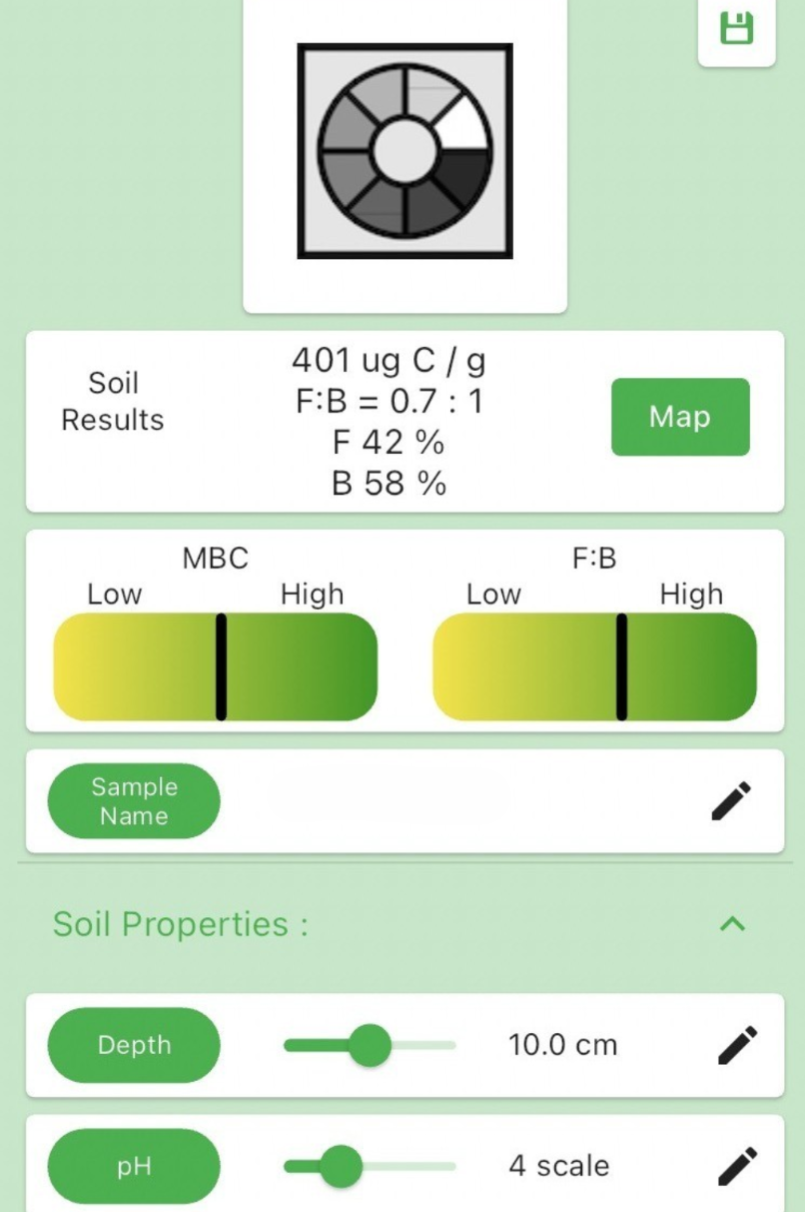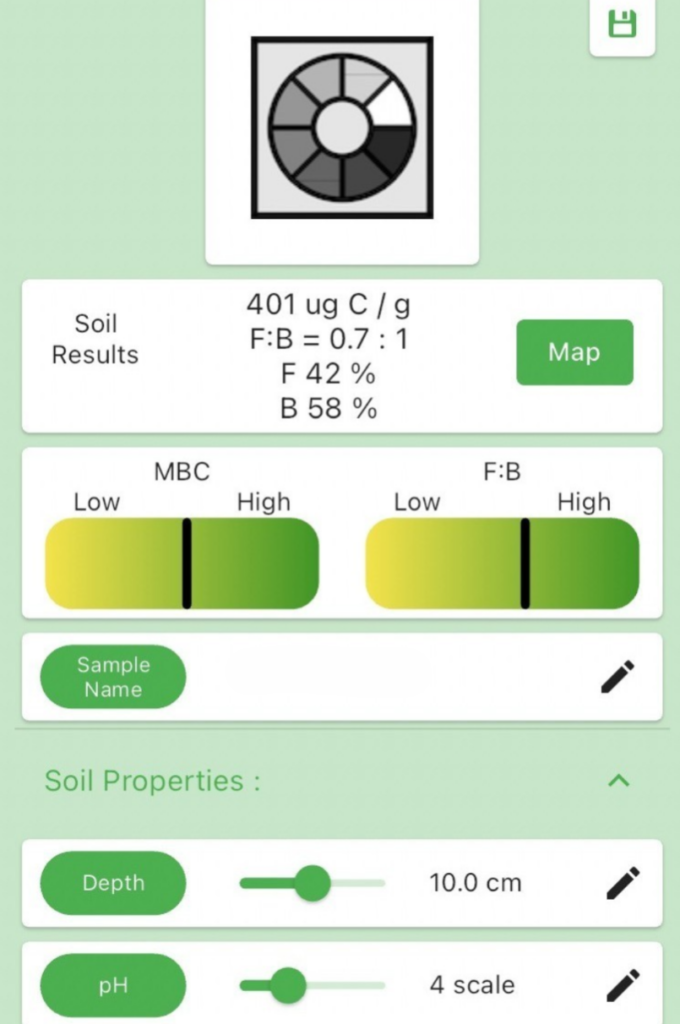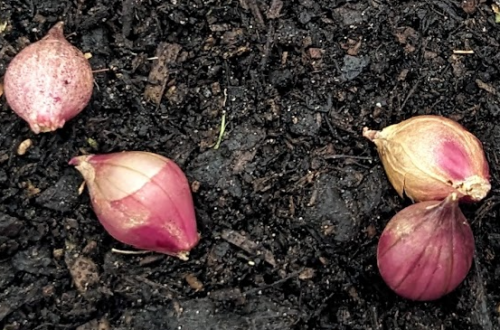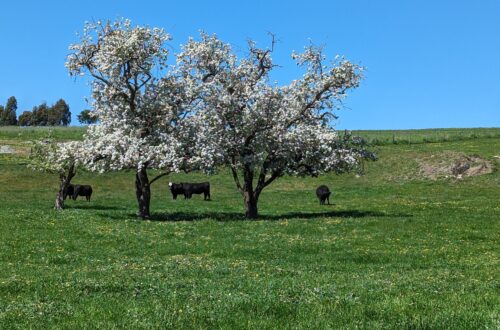
Biological Soil Test Results
On Thursday, we had an agronomist visit to conduct several tests, including a biological soil test. Soil health is crucial for the success of any garden or farm, especially when employing sustainable practices like permaculture, regenerative farming, and organic farming. These soil tests offer valuable insights into the microbial activity and overall fertility of our soil. Last night, we received our biological soil test results. I’ll explain what each reading means and outline my plan to enhance our soil ecosystem for improved health and productivity.
Soil Test Results:
- Microbial Carbon: 401 µg C/g
- Fungal-to-Bacterial Ratio (F): 0.7:1
- Fungal Proportion: 42%
- Bacterial Proportion: 58%

1. Microbial Carbon: 401 µg C/g
What It Means: Microbial carbon refers to the amount of carbon stored in the soil’s microbial biomass, which includes bacteria, fungi, and other microorganisms. The value of 401 µg C/g indicates that our soil has a moderate level of microbial activity. This microbial carbon is crucial because it plays a key role in nutrient cycling, organic matter decomposition, and maintaining soil structure. Ideally we would want it to be >500µg.
How we plan to Improve It:
- Incorporate Organic Matter: We plan to add compost, aged manure, and plant residues to increase the organic carbon in the soil. This will provide nourishment for the microbial community and support overall soil health.
- Cover Cropping: we also will be planting cover crops like clover or legumes which can add organic matter and support microbial life.
- Avoid Chemical Use: we are going to try and be 100% organic and avoid synthetic fertilizers and pesticides that can harm microbial life and reduce carbon content.
2. Fungal-to-Bacterial Ratio (F): 0.7:1
What It Means: The Fratio is an indicator of the balance between fungal and bacterial populations in the soil. An Fratio of 0.7:1 means our soil is slightly bacterial-dominated, which is common in cultivated or disturbed soils. Bacteria are typically more abundant in soils with regular tilling or in areas where annual crops are grown. This makes sense as the property was heavily cropped for potatoes for a long time before cattle were moved on.
How we plan to Improve It:
- Increase Fungal Activity: To shift the balance towards fungi, we will be trying to add woody mulch, leaf litter, or fungal-rich composts. These materials decompose slowly, favoring fungal growth.
- Reduce Tillage: We aim to try and avoid tilling majority of the property and minimize soil disturbance to encourage fungal networks, which are essential for nutrient absorption and soil structure.
- Plant Perennials: Introducing more perennial plants, especially those with deep root systems, can support a healthier fungal population. our aim is to focus heavily on perennial plants over the next year or two for early establishment.
3. Fungal Proportion: 42%
What It Means: Fungi make up 42% of the microbial biomass in our soil. Fungi are essential for breaking down complex organic materials like lignin and cellulose, which bacteria cannot easily decompose. They also form symbiotic relationships with plant roots, aiding in nutrient uptake and improving soil structure.
How we plan to Improve It:
- Add Fungal Compost: Use compost that is high in fungal content, and create our own fungal-dominated compost by focusing on woody materials.
- Use Mulches: Mulching with wood chips, straw, or leaves can help build up fungal populations over time.
- Avoid Chemical Inputs: Harsh chemicals can reduce fungal populations, so focusing on organic or natural fertilizers and pest control methods.
4. Bacterial Proportion: 58%
What It Means: Bacteria make up 58% of the microbial biomass in our soil, indicating that our soil is slightly bacterial-dominated. Bacteria are important for breaking down simpler organic materials and are usually more prevalent in soils that are frequently disturbed or in annual crop systems. This again makes sense from the history we have been told about the property.
How we plan to Improve It:
- Diversify Plantings: Diversity is important we plan to Introduce a mix of plants, including those that support both bacterial and fungal growth. Legumes, for example, can boost beneficial bacterial populations through nitrogen fixation.
- Balanced Organic Matter: While we are increasing fungal activity, we need to ensure a steady supply of fresh organic material (like green manure) to maintain a healthy bacterial population. carbon and nitrogen.
- Maintain Soil Moisture: Bacteria thrive in moist environments, so regular watering and mulching are essential for maintaining optimal moisture levels. In a drought-prone country, this can be challenging in some years. We will set up an irrigation system to assist with this, but we also hope that the organic matter will act as a sponge to retain moisture. Additionally, using mulch will reduce evaporation, and shading from trees will help keep soil temperatures cool.
So these were the biological soil test results we received with samples taken on the 15th August ’24. We will take another biological soil test results again in maybe a years time to see how the soil is coming along.



